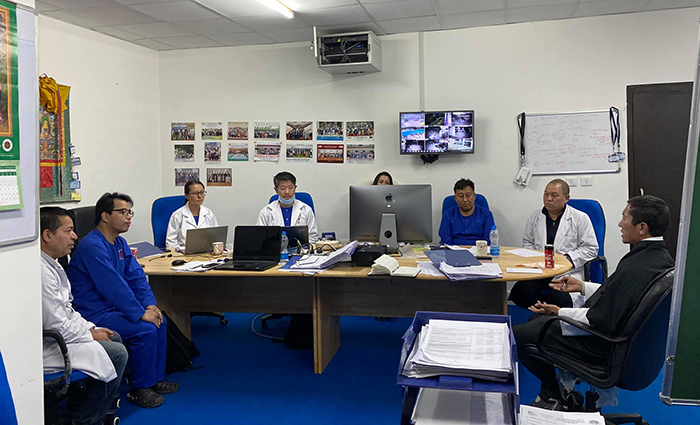Younten Tshedup
Bhutan is using an internationally certified machine, polymerase chain reaction (PCR) to test sputum, blood and body fluids of suspected new coronavirus patients.
The PCR uses artificial intelligence to deliver results and human error is very minimal, according to Lyonchhen Dr Lotay Tshering. The World Health Organisation (WHO) supplies the reagents used in the testing.
The reliability of tests the Royal Centre for Disease Control conducted for COVID-19 came under the public’s scrutiny as the news on the virus spread. People grew suspicious when the partner including the driver and guide, who had close contact with the patient, tested negative even after two tests.
Lyonchhen said that individuals under high-risk exposure, which included the partner, driver and the guide not testing positive could mean the infectivity of the disease from the patient was low.
He said the American patient, who left for home yesterday, had an apparent gastrointestinal (GI) motion over respiratory motion. This means the patient was not throwing out the virus from his mouth or nose but was defecating it.
The reason why some individuals do not get infected would also depend on the immune system of the host, infectivity or aggressiveness of the virus, and the viral load, Lyonchhen added. “There could be many reasons for this but we are not sure which one it would be in his case.”
Unlike an ultrasound machine where there could be likely human errors when a health staff compiles the report, the PCR uses artificial intelligence to deliver results, Lyonchhen explained.
“These machines are very smart. You put the samples inside the machine and you get the result – positive or negative,” he said.
Sometimes called molecular photocopying, PCR tests are used to study the genetic material of viruses.
If the gene pattern matches with the one coded by the Chinese following the outbreak, the test would show positive. “Anything other than the COVID-19 virus, the test would show negative,” Lyonchhen said.
Lyonchhen said that if the samples were tampered and contaminated, the result would rather be bizarre and doubtful. The tests are highly sensitive, he added.


